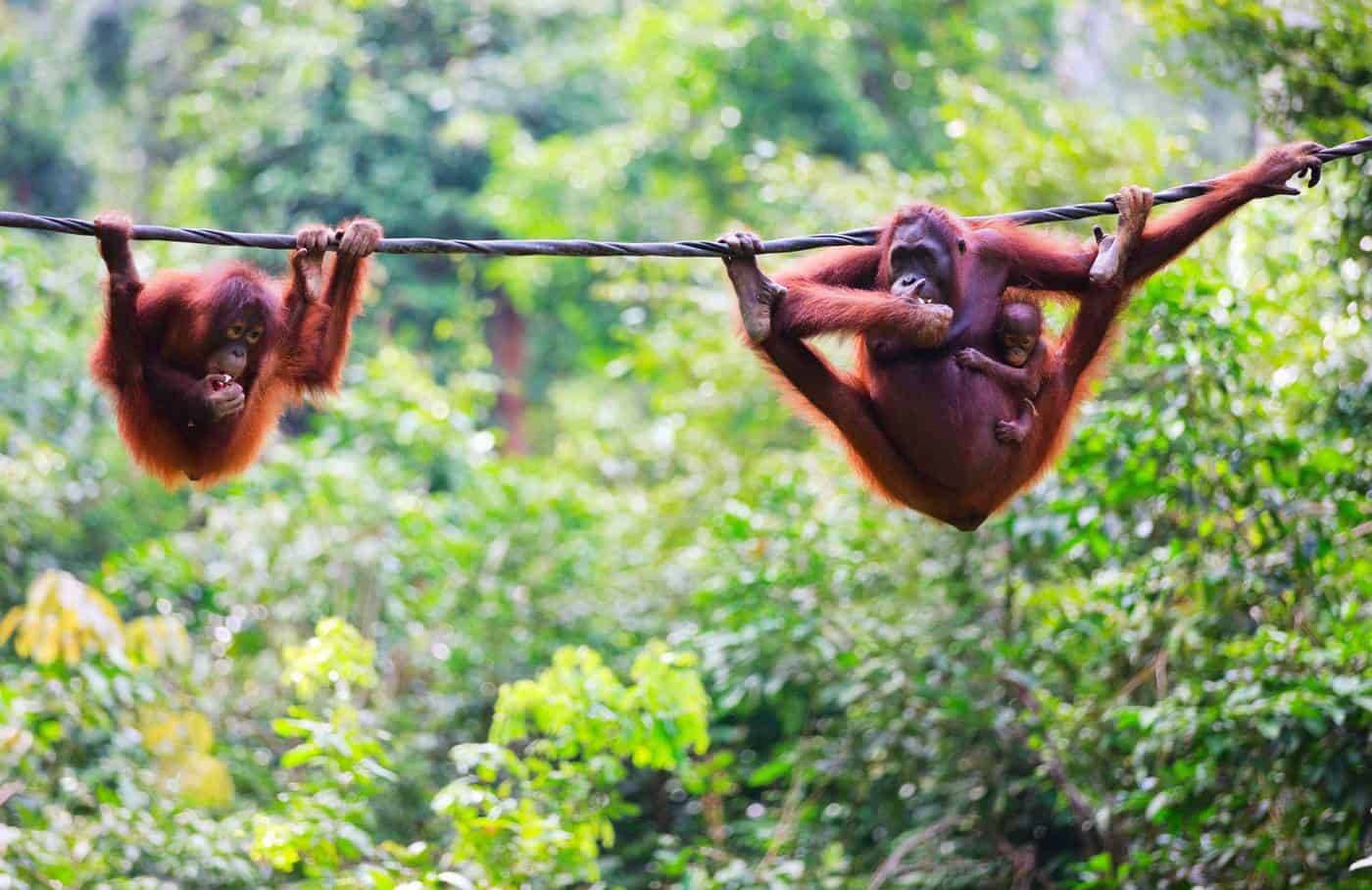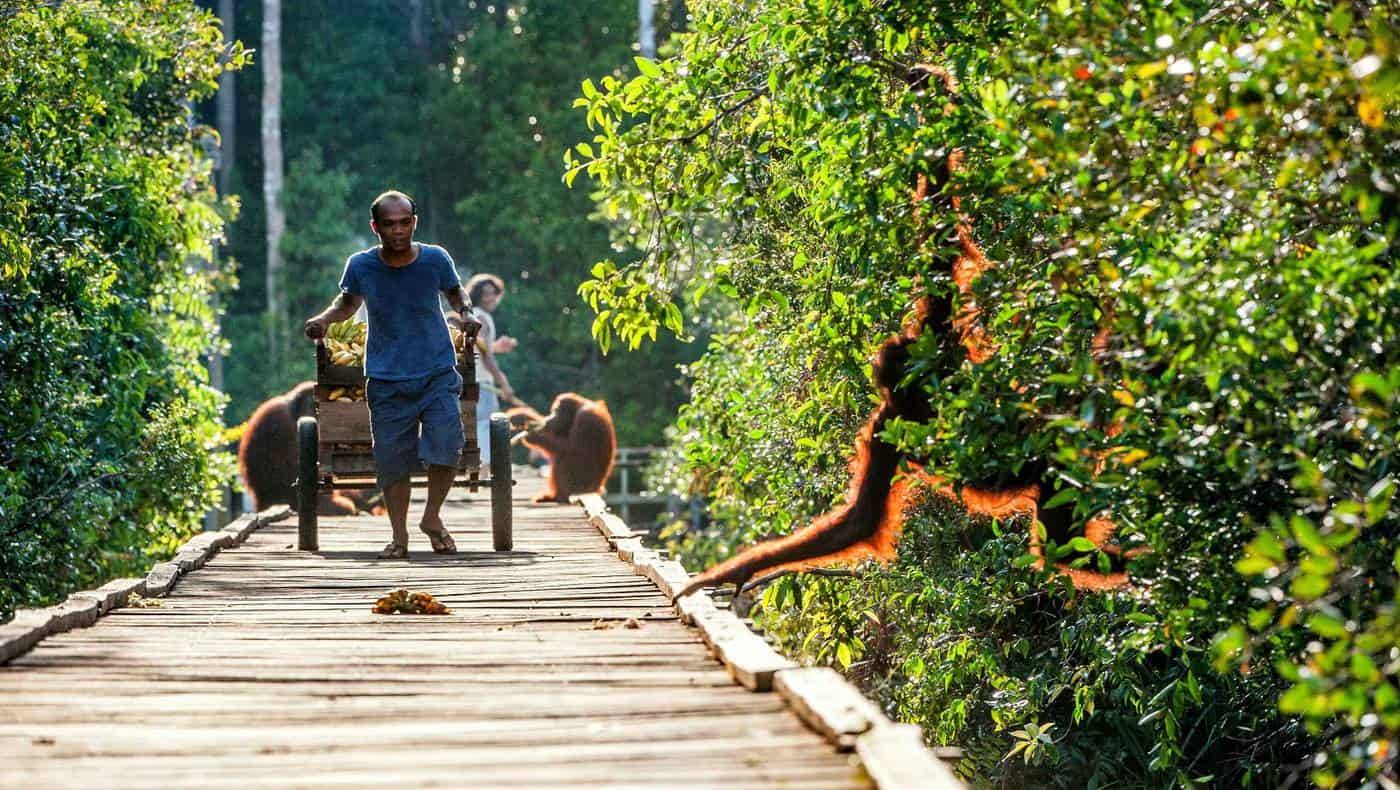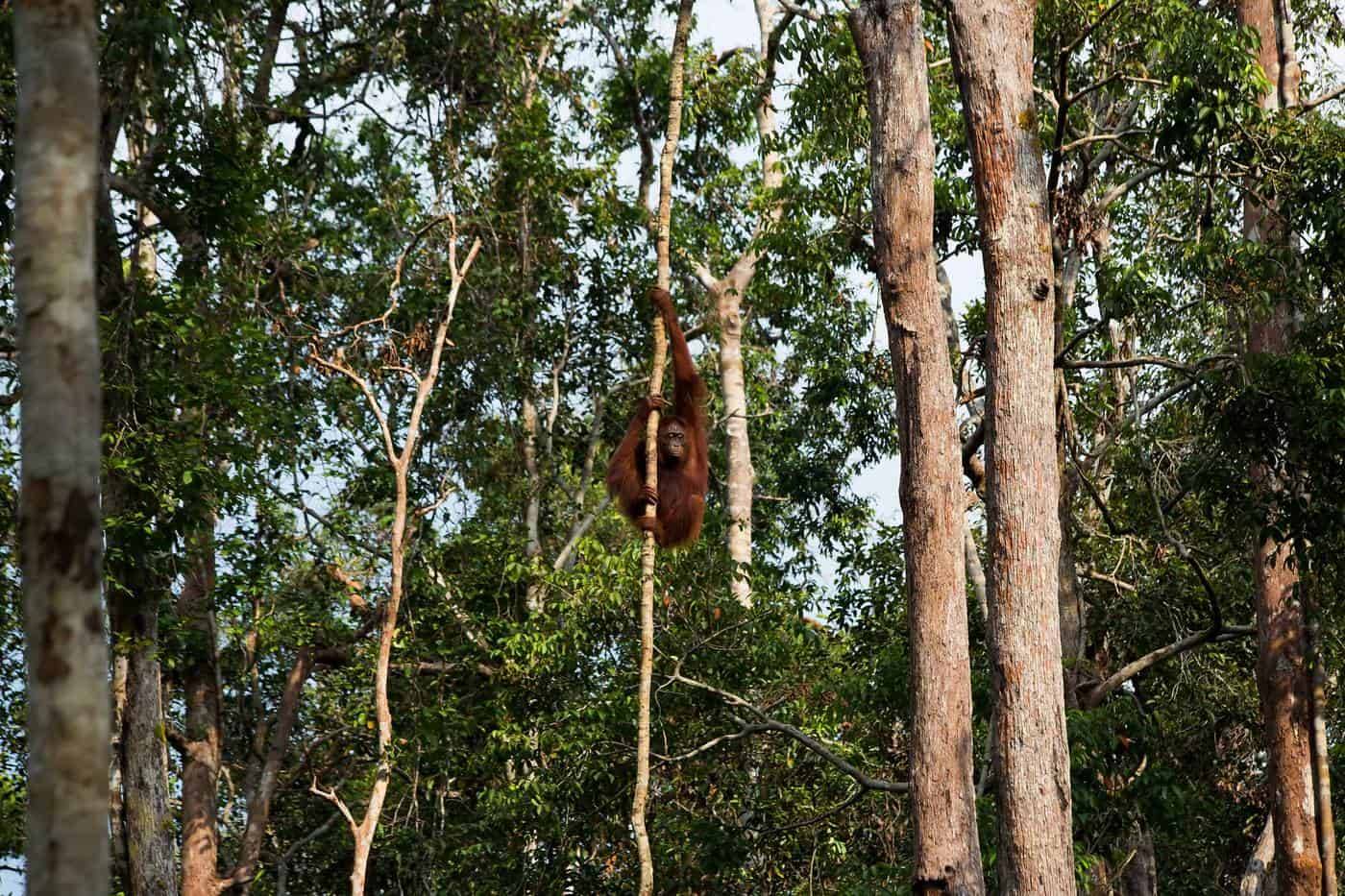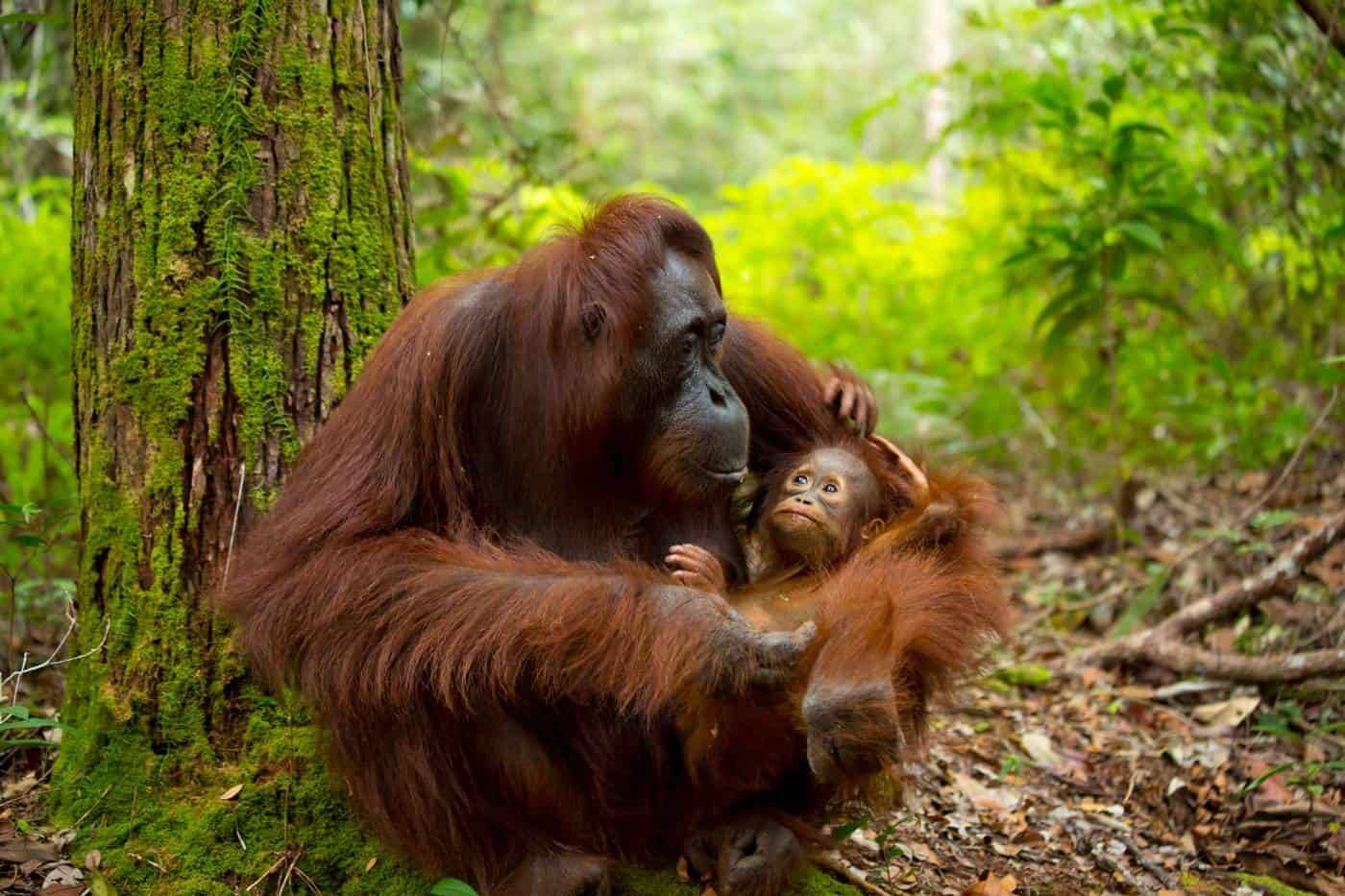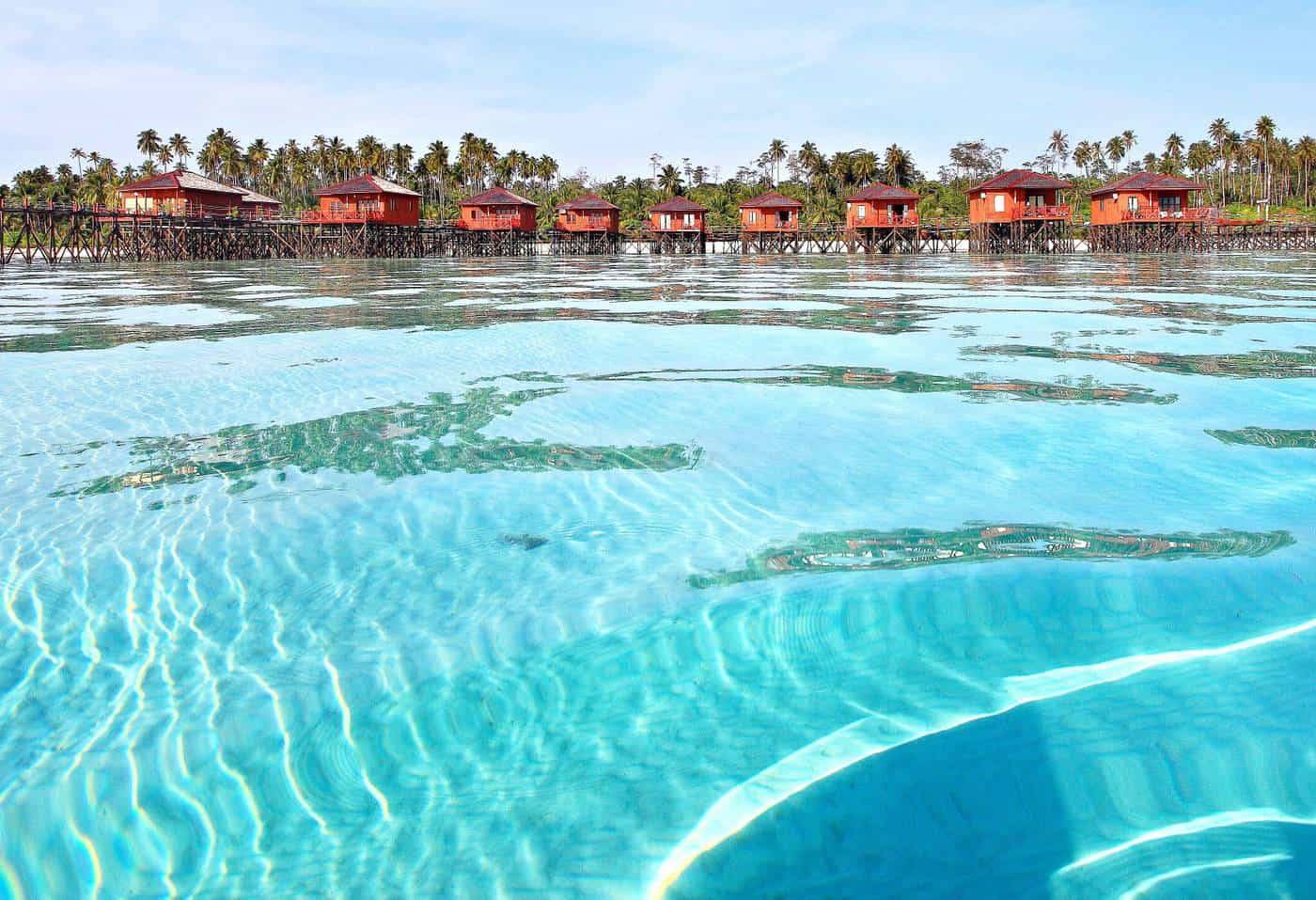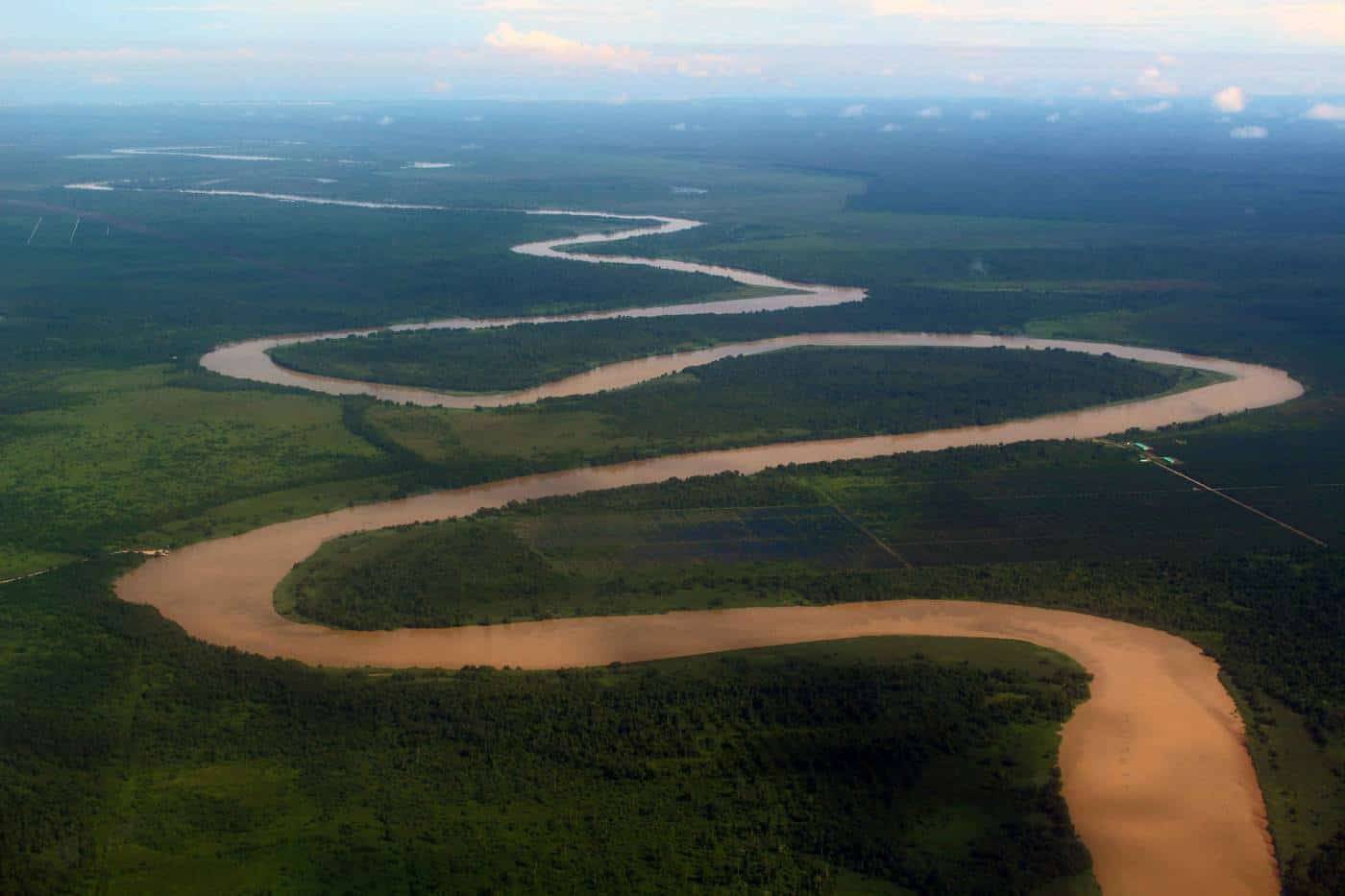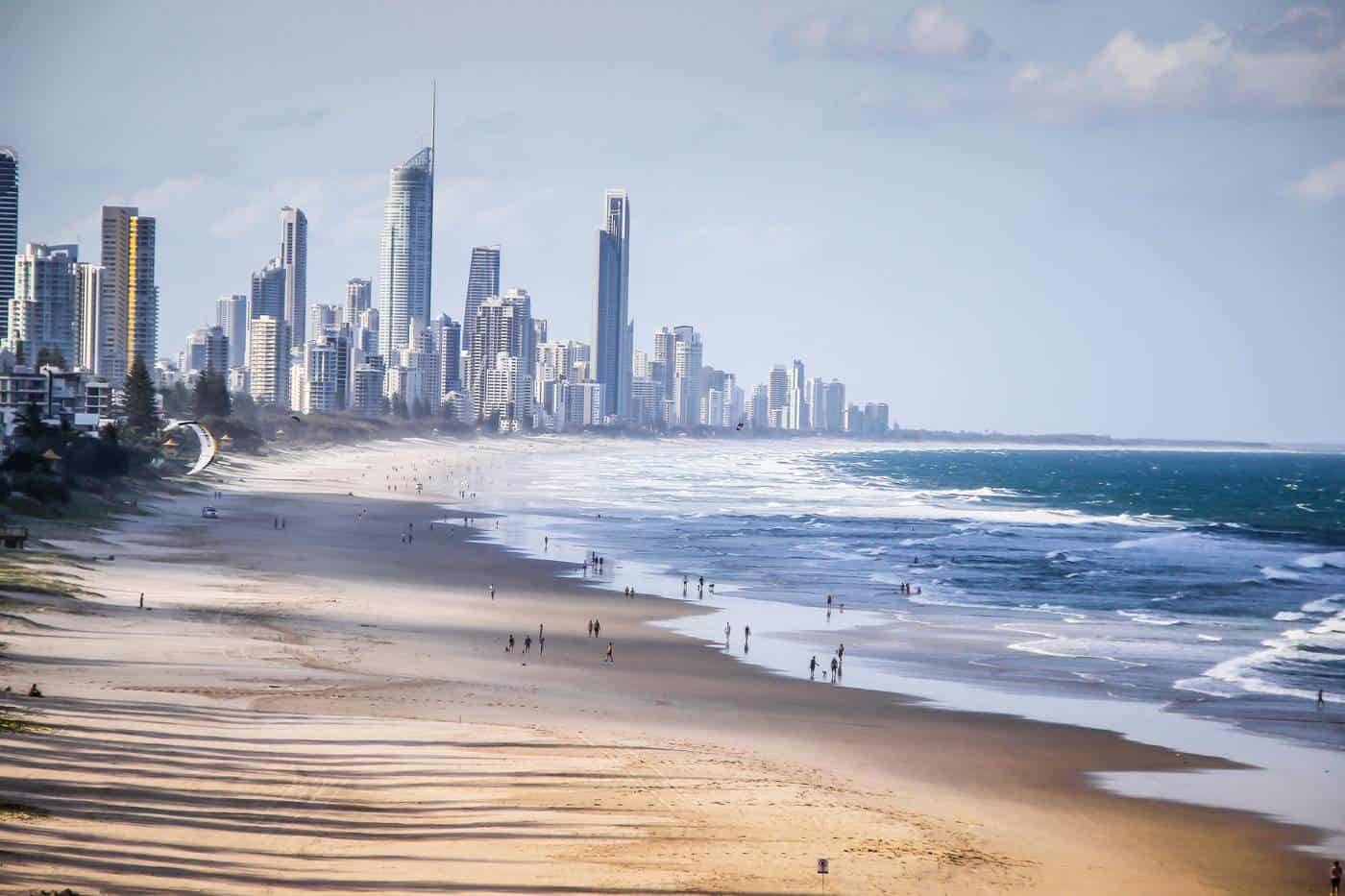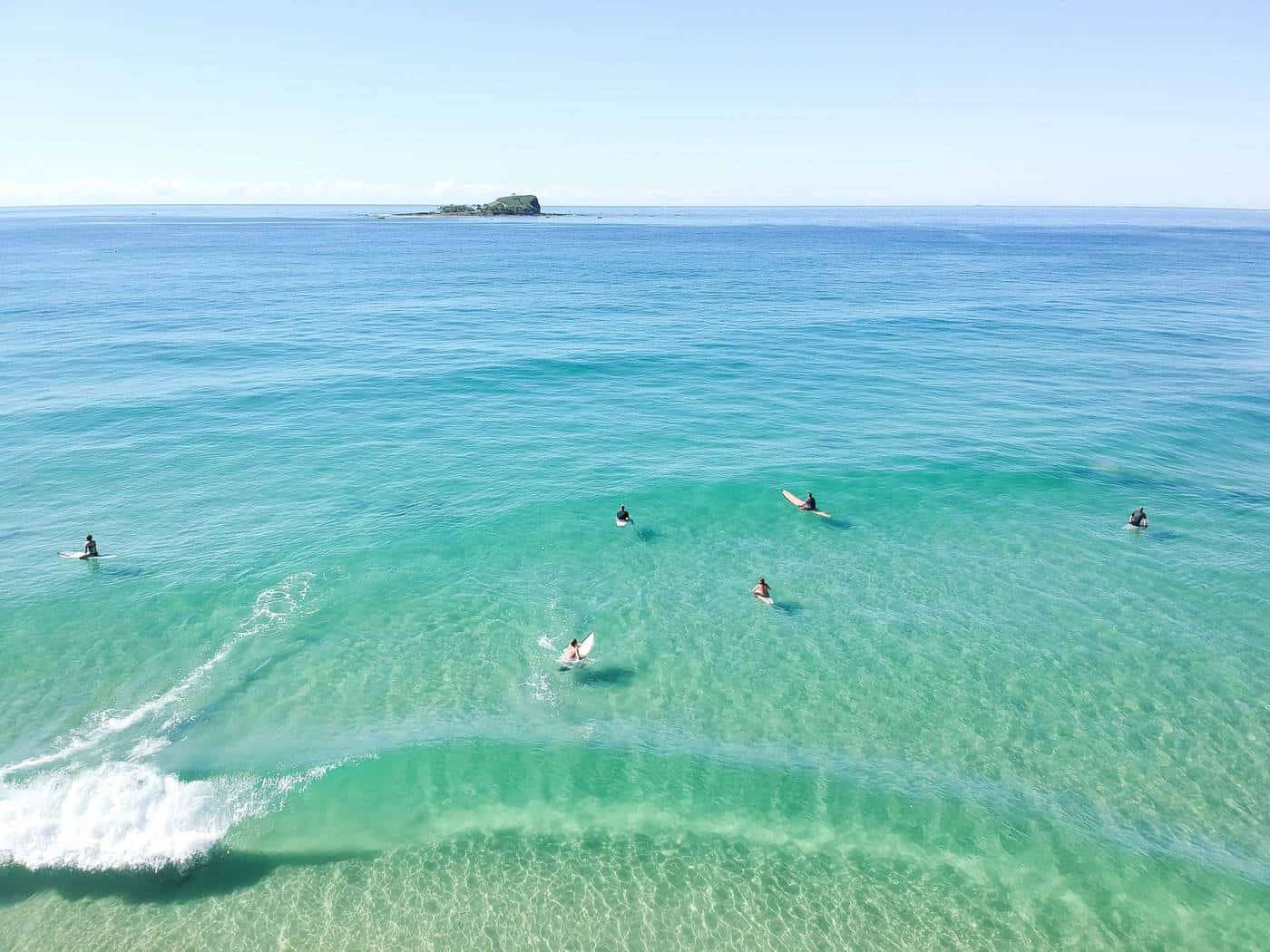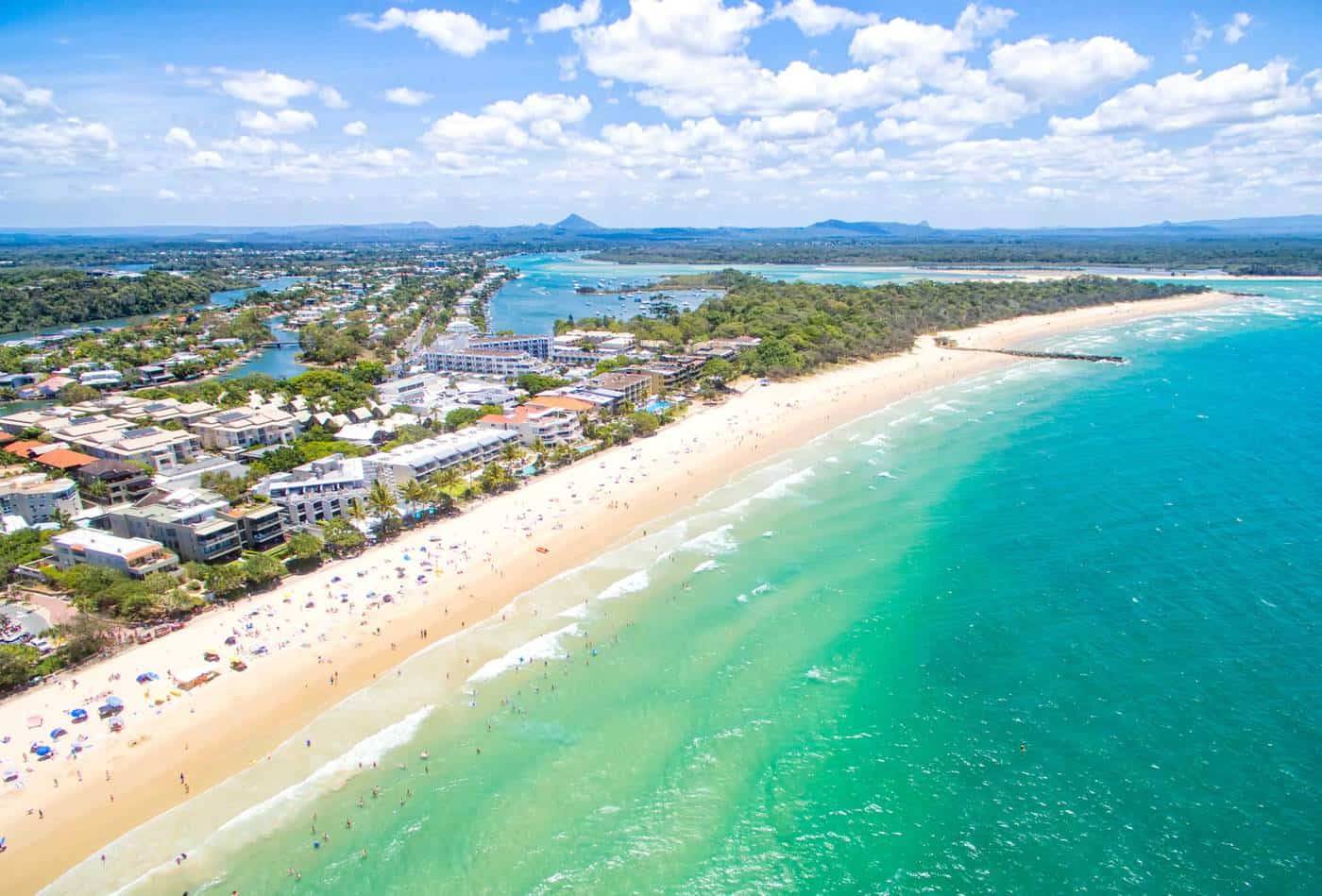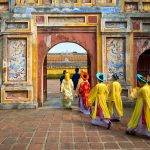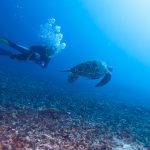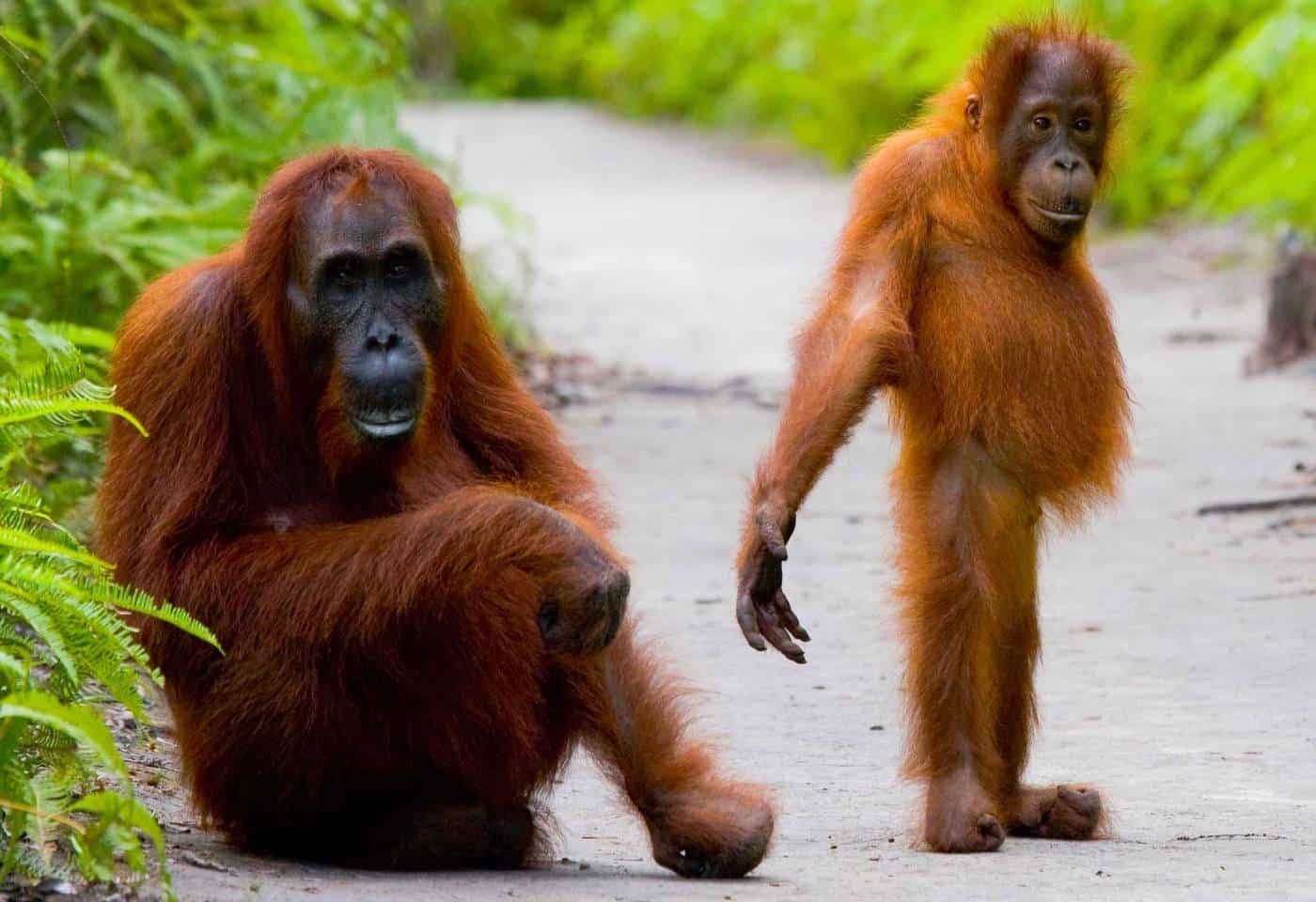
7 AMAZING ORANGUTAN SAFARIS
Bornean dense tree-cover offers three habitats in one – leafy canopy, bustling tree trunks and damp forest floor, and one species is more than happy to forage in any of them – Orangutan. In the Malay language “Man of the Woods”, orangutan the completely depends on the lush foliage and its goodies. Their future is in the forest, yet like many species, precarious, under the threat of poaching and logging.
7 PLACES WHERE TO MEET WILD ORANGUTANS IN KALIMANTAN
For travellers, zoologists and naturalists, the furry ape is the main reason to visit Borneo, particularly the part that belongs to Indonesia. Eco-tourism is becoming increasingly popular, and the Indonesian Borneo (Kalimantan) is one of the global hotspots.
Indeed, there are (still) places where orang-utans can be seen in the wilderness. Borneo is one of the two places on our planet where orang-utan has survived in the wilderness. Whereas in Sumatra, orang-utans became entirely arboreal (for the presence of tigers and leopards) Bornean orang-utans can fully enjoy the rainforest. Their only danger is us – humans.
1.TANJUNG PUTING NATIONAL PARK
The starting point to the world-famous Tanjung Puting forest is Kumai where all tours and cruises can be booked, and local guides can be hired. Tanjung Puting reserve is regarded to be the easiest place on Earth to spot orang-utans and proboscis monkeys in their natural environment.
Coastal swamps and mangroves were turned into a protected area in 1982. The Tanjung Puting rainforest is home to diverse fauna and flora, such as nine species of primates, clouded leopard, sun bear, barking deer, sambar deer, crocodiles and more than 200 different species of birds, including the rare hornbills. The vast wetland has such diverse fauna, and lush flora that is was given an epithet “Garden of Eden”.
CAMP LEAKEY
Camp Leakey, built within the Tanjung Puting National Park, has been an active research facility since 1971 and a rehabilitation centre that studies orangutans which have been hurt or orphaned.
The centre helps the apes to recover in their ‘natural habitat’ so they can be released back into the wild. The furry apes get regularly fed to attract more tourists and often stay at the centre for good as they are not able to adapt to the tough jungle life.
However, there has always been much controversy and question whether this kind of projects is beneficial or rather harmful.
2.SABANGAU NATIONAL PARK
Home to the largest orangutan population on our planet, sadly, the magnificent rainforest of Sabangau River has largely been damaged by illegal forestry. There are many places where the primates are no longer able to cross rivers to move freely from territory to territory, and their pathways got cut off. The other side of the national park, virgin forest along the Kahayan River has been home to orang-utans and other species for centuries.
Today, there are numerous tour operators in Palangka Raya that can organise a tour to the Sabangau National Park.
3.GUNUNG PALUN NATIONAL PARK
Being notable for its diverse flora, ranging from mangroves, freshwater swamps, lowland forest to montane forest, Gulung Palun National Park is one of the few places in our planet where the visitors get a chance to admire a large scale of rare species in the wild, including the king of the Bornean jungle – orangutan.
Gunung Palun became a national park in 1990, and since then there is much research conducted at the Cabang Panti Research Camp, built deep in the forest. Today, the park is partially becoming open to public and eco-tours, and jungle trekking is possible (a permit required).
Ketapang is the main gateway to the reserve where tours can be arranged. There are good accommodation options and facilities that allow the travellers to prepare for the trip.
4.KUTAI NATIONAL PARK
Although East Kalimantan suffered severe damage of its rainforest during the extensive logging and deforestation back in the 1970s the area is successfully recovering and the Kutai National Park, established in 1982, welcomes the visitors at two different entrance points: Sangkima (access by vehicle) and Prevab (access by boat), and they all come for one reason: orangutan.
The national park lies on the Mahakam River, and it includes numerous lakes, e.g. Lake Maau, Sirapan, Besar and Satan. The local mangroves and freshwater swamp forest are home to more than 100 species of mammals and 300 species of birds, including orangutans and other primates. The protected area offers various boat tours, jungle trekking and eco-lodges available in the park. Gateway to Kutai National Park is the coastal city of Bontang.
5.BUKIT BAKA BUKIT RAYA NATIONAL PARK
Named after the mountains of Bukit Baka (1620 m) and Kalimantan`s highest peak Bukit Raya (2278 m), the national park stretches across the Schwaner Mountains on the border of Central Kalimantan and West Kalimantan.
Apart from the iconic orang-utan, the park features exceptional bio-diversity, including clouded leopards, helmeted rhinoceros, sun bears, rare birdlife and various species of primates. The reserve is one of the least trodden parts of Borneo with spectacular trekking opportunities.
The starting point to the park is Sintang (via Sanggau). You will need to purchase a permit to enter the national park at the local tourist office in Sintang.
6.BETUNG KERIHUN NATIONAL PARK
Covered with montane rain forest, the wilderness of Betung Kerihun National Park is characterised by steep slopes and dense tropical jungles, with the highest peaks Mount Kerihun (1790 m) and Mount Lawit (1767 m).
Stretching along the Malaysian border, right at the heart of Borneo Island, the reserve does not get many Westerner visitors. Several Dayak Tribes live in this remote area rich in diverse fauna and flora, including the endangered orangutan and due to the precious eco-system, the national park was proposed to become a World Heritage Site.
Trekking, caving, rafting, kayaking, canoeing and eco-tours can be arranged in the town of Putussibau, and if you want to save time and do not mind spending more, you can fly directly to the town from Pontianak.
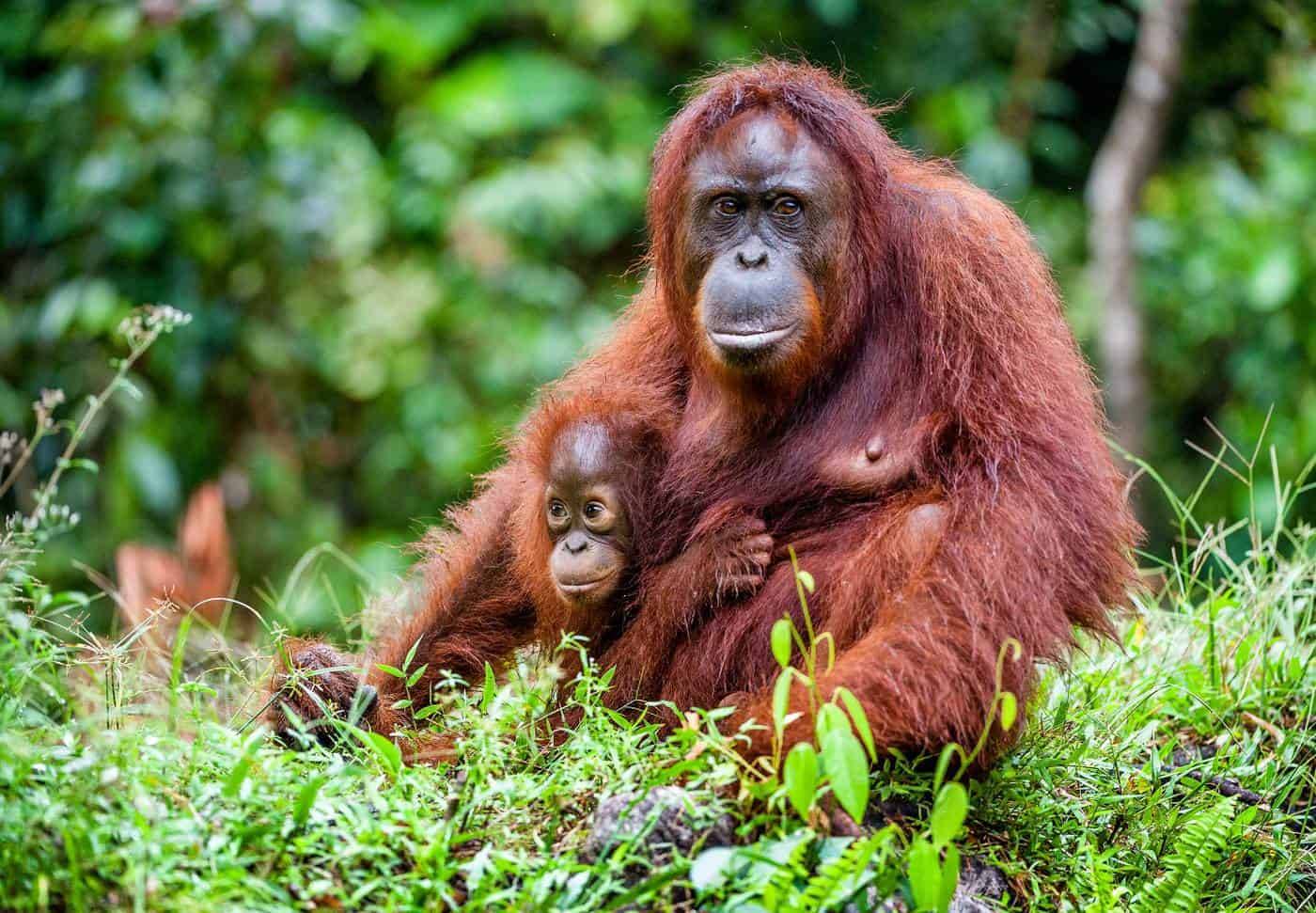
Orangutans spend most of their life in trees, Betung Kerihun provides the relatively men-unspoiled environment, and they can safely enjoy the ground
7.KAYAN MENTARANG NATIONAL PARK
One of the world`s least accessible places, Kayan Mentarang National Park is the last wilderness. The protected area is slowly opening to tourism. Its isolation contributed to the reserve`s outstanding perseverance. It is right here where the last surviving Pygmy elephants hide in their natural habitat and few remaining individuals of the Bornean rhinoceros have survived, sadly only in captivity.
The easiest way to visit the Kayan Mentarang National Park is booking a river tour from Tarakan or Samarinda. There are numerous expedition providers offering various packages.
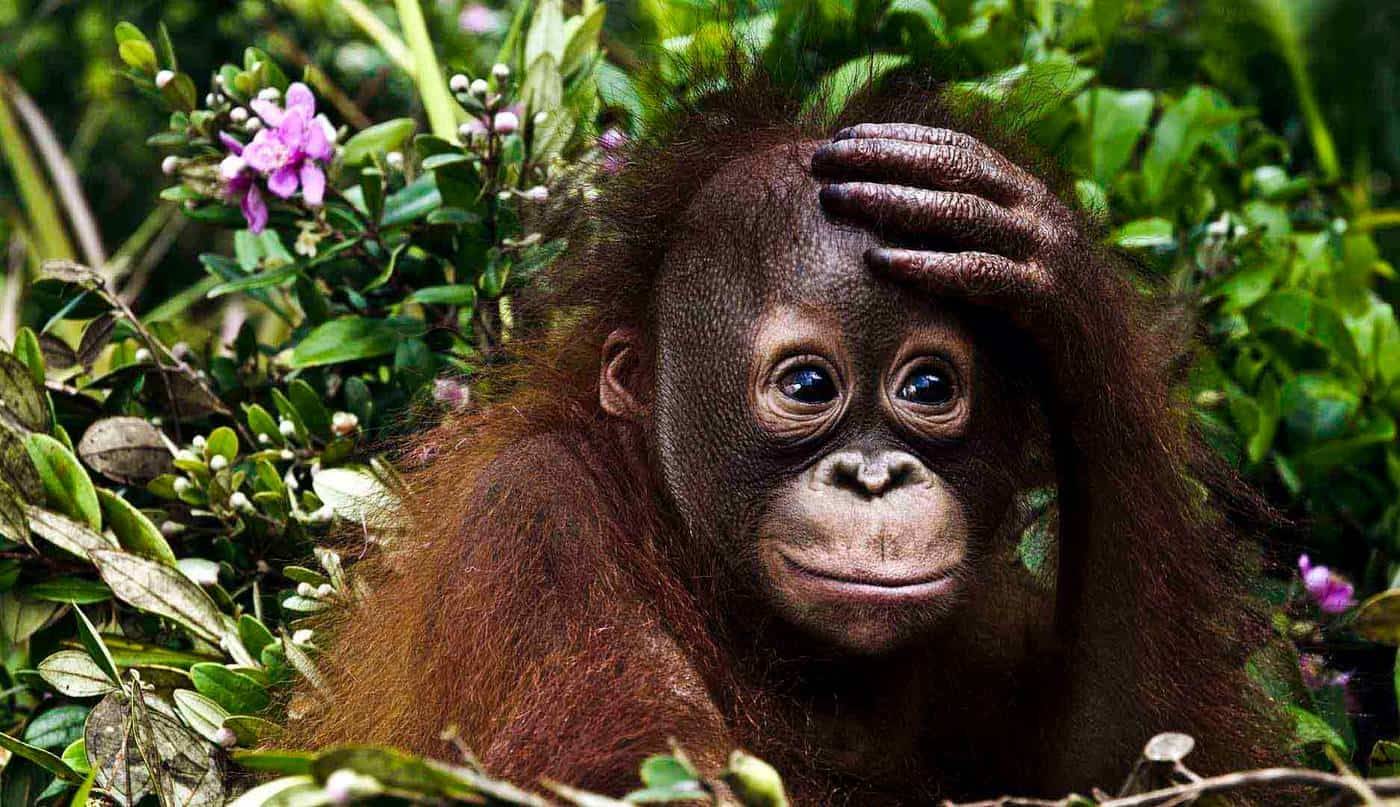
The new generation of the orang-utan in Kayan Mentarang are still hopeful about their future – the question is until when
THE DILEMMA OF ECO-TOURISM (MUST-READ BEFORE YOU GO)
National parks of Kalimantan have often been an object of discussion due to the past logging and still present illegal forestry. Borneo was gifted with some of the most biologically diverse habitats on earth and also the world`s oldest rainforest. The extensive deforestation, caused by rapid industrialisation, started in the 1960s. Since then, Borneo has undergone a dramatic transformation, and even though there were several attempts to stop these activities, illegal logging is still a big topic.
Naturally, the fast-growing tourism, especially the eco-tourism industry, does not help to prevent this from happening. On the top of that, eco-tourism not only indirectly encourages the deforestation (building new facilities, providing tours into the previously untouched areas) but also contributes to disappearing of the indigenous Dayak culture and their traditions, and it ultimately affects the future of orang-utans and other endangered species.
Therefore, every visitor is strongly advised to do some research and re-consider the concept of eco-tourism prior to travelling.


